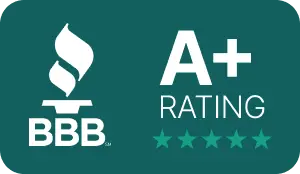Probate can feel like a maze—especially when a future inheritance is already earmarked for tuition, medical bills, or a sibling buy-out. Below is a practical, step-by-step timeline that shows where the process moves swiftly, where it slows to a crawl, and how heirs often inject liquidity without waiting for the judge’s final signature.
Petition & Executor Appointment
The clock starts when someone—usually the named executor—files a petition to open probate. In many counties the first hearing lands 30-60 days out. Court approval installs an executor and issues letters testamentary that empower banking, real-estate, and tax transactions.
Marshal Assets & Order Appraisals
With authority in hand, the executor inventories bank accounts, brokerage assets, and personal property, then hires a certified appraiser for real estate. If the estate includes a family home that needs repairs or a fast refinance, heirs sometimes compare estate-secured bridge loans with traditional mortgages to avoid fire-sale pricing. Understanding how those two tools differ keeps property decisions aligned with the court calendar. Learn the key financing contrasts here.
Publish Creditor Notices & Run Claim Periods
State law grants creditors a window—often four months—to file claims. The executor can’t distribute funds until this notice period closes and valid debts are paid. Heirs facing tuition deadlines or medical bills may explore cash-out options. Comparing the cost breakdown among advances, probate loans, and personal loans clarifies which route balances speed and total expense. Compare the true costs side-by-side.
Pay Taxes, Settle Debts, and File Interim Accounts
Federal or state estate-tax returns can add months, especially for seven-figure estates that trigger audits. If a six-figure tax bill threatens a lien, pulling capital upfront can prevent penalties. Here’s where a large inheritance advance—structured as a sale of future proceeds—delivers cash in days without personal guarantees. See how big advances stay efficient.
Court Review & Final Accounting
Once debts are cleared, the executor submits a final report. Courts typically take 30-45 days to approve. During this home stretch, heirs often ask how quickly they can bridge the last gap. A real-world timeline analysis of probate and inheritance advances shows funds landing in as few as three business days when documents are ready. Map the fast-track sequence to time your application perfectly.
Distribution & Payout
After the judge signs off, the executor cuts checks or transfers titles. But “final” rarely means immediate: banks may hold large wires for verification; title companies can take a week to record deeds. Understanding **how long heirs usually wait—and why—**sets realistic expectations so you’re not surprised by last-mile delays. See the average wait and work-arounds.
Putting the Timeline to Work
- Front-load your documents. A complete packet slashes underwriting and court requests alike.
- Match financing to the step you’re in. Property decisions? Consider estate loans. Tax liquidity? Model large advances.
- Run the cost math early. Knowing the fee curve of each option beats scrambling when a deadline hits.
- Ask disciplined questions. A rapid advance is only smart if the contract passes a due-diligence check.
- Time your application. File once appraisals or creditor periods lock in to avoid re-underwriting.
A clear roadmap turns probate from a black-box process into a series of predictable checkpoints. With the right knowledge—and the right funding strategy—you can keep life moving while the estate paperwork catches up.








